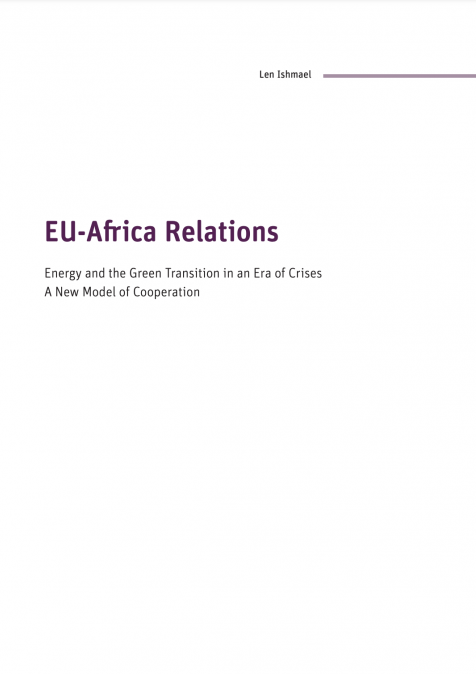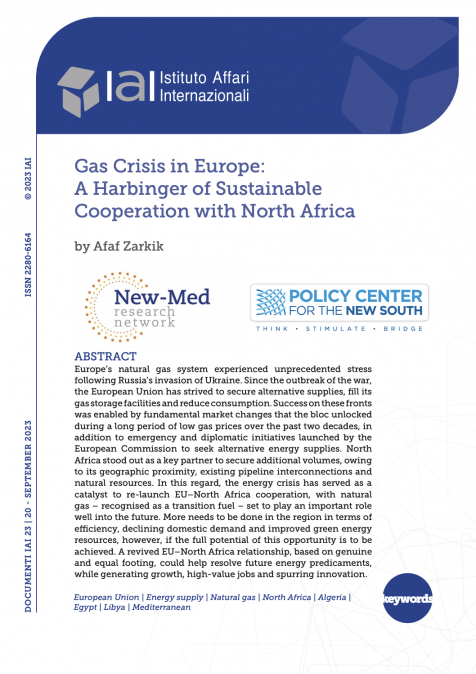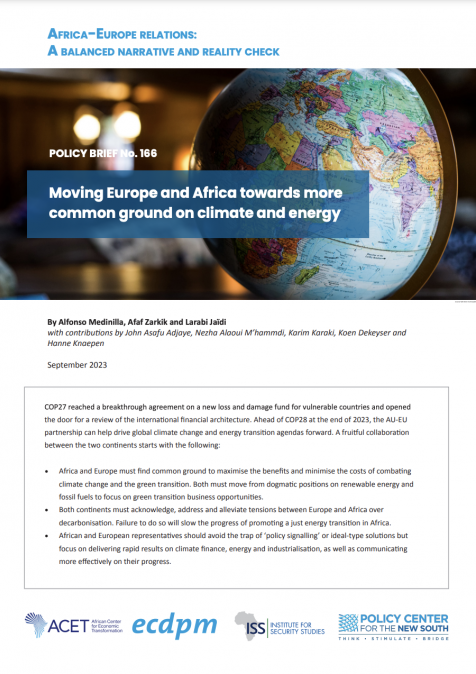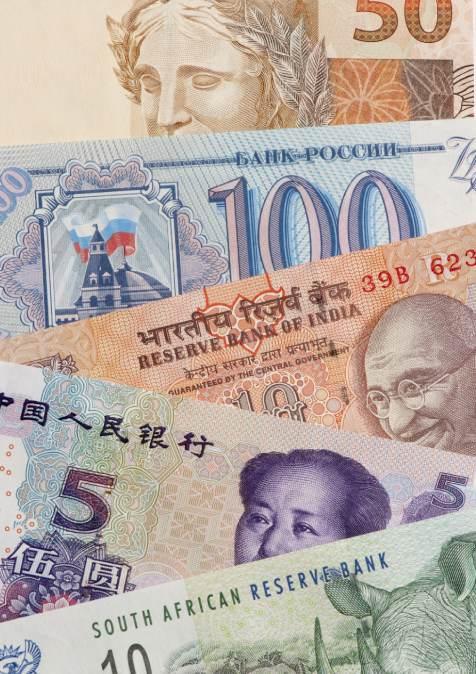Publications /
Opinion
Bénédicte Savoy, who documented her enthusiasm in Le Monde, was certainly biased —“they say that youth is the time of courage,” she wrote, because in two minutes and 35 seconds, on November 28th 2017, France’s President, Emmanuel Macron, swept aside several decades of official French museum policy. He did it publicly, in the crowded lecture theater of Ouagadougou University, in front of several hundred students, under the gaze of Burkina Faso’s president, Roch Kaboré, and the cameras of the news channel France 24. He did it in the name of youth, Madame Savoy insists (herself 46 years old, professor at the Collège de France, and chair of the department of modern art history at the Technical University in Berlin) since the president evoked youth seven times in his speech: “I am from a generation of the French people for whom the crimes of European colonialism are undeniable and make up part of our history.” In the next five years, Emmanuel Macron promised, “I want the conditions to be created for the temporary or permanent restitution of African patrimony to Africa.” In addition, the enthusiastic professor Bénédicte Savoy would have a role to play, faced with a historic challenge no one has ever dared before her. The time has come to write history, another chapter.
A revolution? Almost. Restitution as recognition of colonial evil, although Macron only considered sub-Saharan Africa, neglecting other former French colonies of the Maghreb, not to mention Asian countries like Cambodia and Laos. Their theft of identity, their souls exploited, their memory, and past embedded in art --gone to the West... Or the North. Africa’s traditions, its artifacts, history, looted and imprisoned in museums. Admired by people in distant countries, home of plundering people. African artifacts shelved in splendid air-conditioned buildings, captured like elephants and rhinos in a zoo. No feeling of guilt by the masses. Hardly any sorrow for theft. No remorse. Cultural slavery as a symbol of defeat. History is not a novice in these matters--soldiers as far back as AD70, Roman legions, plundered the temple of Jerusalem and carrying off a large six-pronged menorah. During the Thirty Year War, in 1622, the University of Heidelberg in Germany saw its famous collection of books stolen by the Bavarian’s -- it took 200 years until they were returned. The Treaty of Versailles of 1919 finally allowed France to recover flags, archives and works of art taken by Germany 50 years earlier (Alexander Herman, 2018, Institute of Art & Law).
Africa is part of an evil history. The colonialists reducing proud cultures to muted slaves, adopting looting as privilege of the assumed superior race. Plunder of dignity and culture began 1830, the year France seized Algiers, only minutes ago in the history of time. The study, coauthored by Bénédicte Savoy, proposing restitution of African artifacts controlled by France, and published in November 2018, extends to 1960, the year generally understood to mark the end of French colonial interest in Africa. Belgium, France, Germany, Britain, Spain, Portugal, Italy were accomplices and colonial competitors, glorifying their acquisitions in sumptuous museums.
From the British museum (which has more than 200,000 African objects) to the Weltmuseum in Vienna (37,000 African objects), or the just-reopened, and splendidly restored, “Africa Museum” near Brussels (with 180,000 African objects), the Berlin Humboldt Forum (75,000), as well as France’s leading ethnographic museum, not to forget the Quai Branly-Jacques Chirac museum in Paris (70,000 African objects), [it is] “a family affair, if you wish,” wrote professor Bénédicte Savoy, “where aesthetic curiosity, scientific interests, military expeditions, commercial networks and opportunities of all kinds, contributed to the justification for domination and national rivalries” (“The restitution revolution begins,” The Art Newspaper, 2018).
After Macron’s speech and the publication of the report, more than 80 scholars, art historians, ethnologists, and historians called on the German government to create a central institute in Berlin to coordinate research, museum work and policy, in addressing colonial history and handling colonial-era heritage in public collections. This debate, the scholars stated, “should not be limited to demands for restitution or reparations.” They added:
“We should seize the opportunity. The discussions over these objects offers to rescue, from oblivion, a centuries-old common history, one that is in many ways brutal and violent, and to take responsibility for this entangled history in the present and future. It presents a unique opportunity to redefine and create a sustainable basis for relationships with countries and societies in Africa, Oceania, Asia, Australia and the Americas, founded on a new view of common colonial history” (Hickley, The Art Newspaper, 2018).
50 Years of Negotiations
The mere word “restitution,” observed Bénédicte Savoy, sparks an “almost kneejerk defensiveness and withdrawal.” Savoy further adds [that] “President Francois Mitterrand publicly demonstrated this in 1994 when, while thanking Chancellor Helmut Kohl for Germany’s restitution of 27 French paintings stolen by the Nazis during the Second World War, he declared: ‘Curators in our countries, those who lead our major museums, must be feeling a certain unease this evening: what if such acts become common place?’”
“No one in France has forgotten the trench warfare conducted by curators at the Bibliothèque Nationale de France (National Library of France) in 2010 when the then-President, Nicolas Sarkozy, ordered the return to South Korea of nearly 300 precious manuscripts deriving from a bloody French Army expedition in 1866,” further explained Savoy in her article, “The restitution revolution begins” (The Art Newspaper, 2018).
“No one in Italy,” writes the historian in the article that was also published by Le Monde, “has forgotten the 50 years of negotiations it took before the return to Ethiopia of the Axum obelisk, seized by Benito Mussolini in 1937. And no one in Berlin wants to return the massive fossilized skeleton of the world’s biggest dinosaur, Brachiosaurus brancai, to Tanzania, where it was taken in 1912 from territories then under the protectorate of the Reich” (The Art Newspaper, 2018).
Apparently, the Africans have given up the battle with Berlin, accepting that the dinosaurian belongs to the world, the global community. The Queen Nefertiti bust, the famous limestone sculpture crafted probably in 1345 BC, had been uncovered and taken from Egypt by a German archaeological team more than a hundred years ago. The statue of the Great Royal Wife of Egyptian pharaoh Akhenaten remains in the “Neues Museum” in Berlin, despite the Egyptian governments repeated request for its return.
"Colonial Amnesia"
Now, the revolution. “A tectonic shift,” believes professor Bénédicte Savoy, who, at times, had asked herself, with how much blood the artifacts were tainted in the years gone by. “Within and without Africa,” wrote the historian, “those who have long called for the restitution of displaced heritage, are seeing the dawn of a new era.”
Not with one word did Madame Savoy mention, that she, and the Senegalese writer and economics professor Felwine Sarr, are responsible for sleepless nights of museum directors and antique dealers worldwide, suddenly challenged to part with their, often, illegally obtained artifacts.
“Curators and trustees of the world’s great museums,” reports Philip Stephens in Financial Times (in a typical understatement), “are in the state of some agitation” (“The west’s great museums should return their looted treasures,” 2018). After Macron’s promise in Ouagadougou, the French government had asked the professors to study the thorny subject “RESTITUTION,” which has been debated through decades, without real honesty nor determination. Now, the 190-page Savoy/Sarr report “comes as a wrecking ball to the quaint and tranquil world of ethnography and anthropological museology,” as declared by Alexander Herman, assistant director of the Institute of Art and Law, an educational organization in Britain. Finally, he should have added, finally justice may be served. The study, “Toward a New Relational Ethics,” reported Art News writer, Naomi Rea, “has been met with horror” by some French museums and gallery directors, who fear the report, supported by the Macron government, “will open a ‘Pandora’s box’ of restitution claims that will empty French museums of their treasures.”
“Museums should not be Hostage to the Painful History of Colonization”
“In Berlin, Macron’s restitution speech has fueled a heated debate about ‘the colonial amnesia’ that seems to have affected the planners of the Humboldt Forum, which, from this year on, “is due to house the ethnographic collections of the former Prussian state” (Savoy, The Art Newspaper, 2018). In April 2018, the German Lost Art Foundation, established to support investigations of Nazi looted art, announced that it would expand its mandate to include artifacts from former colonies (McAuley & Noack, Washington Post, 2018). For this year, Berlin has set aside 3.5 million dollars to help museums determine the origins of possible illegal or illegitimate artifacts. To identify ownership, legally acquired art objects, to determine which exhibit has been looted by armies, stolen by diplomats or received as gifts, seems an almost impossible task. The word restitution in itself did “not scandalize” Stéphane Martin, president of the Quai Branly-Jacques Chirac Museum in Paris, whose institution is threatened by considerable losses of African artifacts, but he argued “museums should not be hostage to the painful history of colonization.”
The French Presidency ordered the return, “without delay,” of 26 valuable works plundered by the French Army in 1892 and claimed by the authorities in Benin. The task to prepare the artifacts for restitution was forced upon the unfortunate director of the museum, Monsieur Martin. The small West African country of Benin, formerly Dahomey, was home of the Kingdom of Abomey (1600 -1894) and priceless wealth. Yet, instead of sitting in the capital of Porto-Novo, the Throne of King Glele, from 1858, is fascinating visitors of the museum near the Seine. As explained by Farah Nayeri, [the African artifiacts and objects in question were] “seized when the French colonial forces ransacked the capital of the 300 year-old Kingdom of Dahomey, they were royal treasures that the fleeing king left behind: statues, thrones, and even the carved polychrome doors of his palace,” (New York Times, “Return of African Artifacts Sets a Tricky Precedent for Europe’s Museums,” 2018). Indeed, during the Maqdala expedition by the British Army into Abyssinia, 1,868 the soldiers of her Royal Highness, Victoria, confiscated (stole) the holiest book of the nation, the Kebra Nagast. Four years later, it was returned from the British museum, upon the order of the British government, with support of the queen herself. She was not amused by the theft -- [making her] one of the few of her generation of citizens.
Only Fractions of its Plundered Greatness
Sure enough, immediately after Macron’s speech and the contagious report, other African nations claimed ownership of its stolen art—the Quai Branly museum, alone, houses 2,281 ethnographic artifacts identified of being of Senegalese origin. Again, the French Presidency has decided to return, as soon as possible, to the former colony, symbolic reparations of its national heritage. And later, after shifting through the objects, more would be sent back to the black continent. Culture minister Abdou Latif Coulibaly: “We are ready to find solutions with France. But if 10,000 pieces are identified in the collections, we are asking for all 10,000.”
The Ivory Coast’s culture minister, Maurice Bandanan, on his part, has prepared a list of 148 works housed in French institutions to be returned this year. On top of the list [is] a ceremonial drum from the Abidjan region currently displayed at the Quai Branly museum.
Within the first three months of this year, Emmanuel Macron will invite African and European leaders, and the representatives of former colonial powers, and African government representatives to search for solutions to the entangled problems of ownership and restitution of about half a million artifacts, reflecting the spirit and the soul of suffering Africa. 95 percent of the continent’s patrimony is admired around the globe; the Ivory Coast alone traced lost artifacts to 50 nations. Until today, the people of Africa can admire the creations of their ancestors on TV shows, produced by National Geographic—if these folks are connected to electricity or a cell phone.
The greatness, the talent of Africa’s artists has disappeared from Africa’s reality, its cultural history erased out of the national consciousness, these surprising creations, forms, colors and figures, inspired by ghosts, or their Gods, fog-covered jungles, the roar of lions, the leaves of gigantic trees and unreal waterfalls.
For years, European museum directors argued against restitution by pointing to the lack of adequate museum structures in Africa. No more ! Benin’s President, Patrice Talon, has approved the sites for five museums that will open next year to honor the King of Abomey and the Amazons, the all-female regiment in Dahomey.
Furthermore, a museum of “Black Civilization” opened in December in Dakar, designed by Chinese government architects, built with Chinese funds, estimated at 30 million dollars. The director of the Museum of Civilization of the Ivory Coast, Dr. Silvie Memel Kassi admitted, “it was not a bad thing in itself that they were preserved and indexed in France,” but once the new museum building in construction is completed, “we could start talking about a definite restitution. The Ivory Coast wants to have access to these objects, because they are a memory.”
European museums will certainly resist any empty spaces in their Africa departments, and most probably, will propose commissions, long-term loans and joint custody agreements. The burden of proving legal ownership, would be a bureaucratic nightmare. Museums are often underfinanced and over stretched, forced like zoos to defend their raison d’etre in our modern world. The process of returning ALL looted items, would cost a fortune—insurance, transport, lawyers, storage space... Air-conditioned museums.
“Roman conquerors sent entire obelisks back home in purpose-built ships. Countless pieces of Egypt’s past were sent to cultural centers abroad by means of gift, trade and coercion. Foreign archaeologists received a portion of the artifacts found in their excavations through an official arrangement with Egyptian authorities known as “partage” (or sharing). Travelers bought antiquities from licensed dealers in Cairo, Luxor and elsewhere,” reported Tom Mueller in National Geographic (“How Tomb Raiders are Stealing Our History,” 2016), before further adding [that]: “Such transactions often went undocumented because antiquities were widely considered personal possessions. Though laws already existed to protect antiquities, “the modern concepts of cultural property-and looting-were still evolving.”
“These are complicated histories and a transparent focus on the provenance of objects is indispensable,” declared the British Museum. The London-based institution has already committed to lending objects to Benin’s planned new Royal Museum on a rotary basis. “We need to use the extraordinary collections in museums to re-write the narrative of a one-sided history to a shared equitable and collaborative one. The British Museum is ready to play part in that.”
In April of last year though, the Victoria & Albert Museum put on a display of items appropriated (looted) by British forces after the Battle of Maqdala, in what was then Abyssinia. The Ethiopian government wants to recover the exquisite items taken from the defeated emperor Tewodros II -- among them a stunning gold crown and chalice, royal jewelry and religious vestments (Stephens, Financial Times, 2018). The museum refuses to return the looted valuables, historic items for the African nation. “Why this opposition?” asked the Financial Times, and believes to have found the answer:“history is double edged.” No one would stand against the restitution of property stolen by, say, the German armies in Europe during the Second World War--but riches seized in Africa nearly a century earlier?
Move into the Future without Reference to the Past
But, as Philip Stephens explains, “beyond the sense of racism and arrogance of a diminishing power the ground is shifting. A history’s perspective on Europe’s empire loses some of the rose tint. Demands for the repatriation of cultural artifacts seized by the colonial marauders look harder to resist” (“The west’s great museums should return their looted treasures,” Financial Times, 2018).
For once, Emmanuel Macron, who is trying to survive a deep political, and identity, crisis, challenged by the so-called yellow vests, a kind of open, yet underground opposition, has, at least, sensed the wind of time – a historic void in Africa, in Europe’s approach towards colonial history. The unacceptable fact that Africa has to move into the future, without references of the (stolen) past. Restitution would allow the people to confront their history, which others, at far away places are admiring. Paris, New York, London. Berlin. Brussels. Now Africa is rejoicing, confronted (after restitution of its lost art) with its cultural past it can create the future. Patience is needed though -- the international rules regarding the treatment of cultural property, knows Alexander Herman of the Institute of Art and Law, are “complex.” Today, there are a host of international conventions and agreements that protect cultural property and heritage in times of both of peace and war. But what about the past?
For centuries, conflict was wrapped up with pillaging of sacred places… [But] 1815 brought change. The year Napoleon was defeated and the victorious Allies had to face a tough question as Alexander Herman puts it, “what was to be done with all the works of art Napoleon had taken from the princely states during his victorious march across the continent? Should they remain at the Louvre, the museum that had become the depository of the French Empire? The answer was an emphatic no” (The Art Newspaper, 2018). Indeed, the British stated, “the works were taken by the French contrary to every principle of justice, and to the usages of modern warfare and should be promptly returned.”
“Not everything” noted the British expert, “was restituted because the canny Louvre director had spirited a number of pieces off to provincial museums, where the Allies could not find them” (Alexander Herman, The Art Newspaper, 2018). More than half of the loot was discovered and returned to the owners—The Laocoön and His Sons (Gruppo del Laocoonte), one of the most famous ancient sculptures, excavated in 1506 to the Vatican, the Medici Venus to Florence, and a collection of ten Cranach’s, works by the German renaissance painter, to Prussia. Even though the returns were not provided by treaty or convention, the principle of restitution can be seen from that point forward. One hundred years later, Africa is allowed to hope to recover its soul and history. The looting, though, goes on, and history is attacked each day. Digging up the past for profit, opening up tombs in Egypt, or sarcophagi, robbing jewelry as well as mummified bodies, reliefs from Iraq, Syria and Yemen, has been a profession for thousands of years, stated National Geographic, which reported two years ago that “the trade in stolen treasures is booming around the world”— African art included. Grave robbing in Egypt is as old as the Pharaohs. In fact, the tomb of Ramesses V and Ramesses VI in the Valley of the Kings near Luxor was plundered about 3,000 years ago.
For centuries, conflict was wrapped up with pillaging of sacred places… [But] 1815 brought change. The year Napoleon was defeated and the victorious Allies had to face a tough question as Alexander Herman puts it, “what was to be done with all the works of art Napoleon had taken from the princely states during his victorious march across the continent? Should they remain at the Louvre, the museum that had become the depository of the French Empire? The answer was an emphatic no” (The Art Newspaper, 2018). Indeed, the British stated, “the works were taken by the French contrary to every principle of justice, and to the usages of modern warfare and should be promptly returned.”
“Not everything” noted the British expert, “was restituted because the canny Louvre director had spirited a number of pieces off to provincial museums, where the Allies could not find them” (Alexander Herman, The Art Newspaper, 2018). More than half of the loot was discovered and returned to the owners—The Laocoön and His Sons (Gruppo del Laocoonte), one of the most famous ancient sculptures, excavated in 1506 to the Vatican, the Medici Venus to Florence, and a collection of ten Cranach’s, works by the German renaissance painter, to Prussia. Even though the returns were not provided by treaty or convention, the principle of restitution can be seen from that point forward. One hundred years later, Africa is allowed to hope to recover its soul and history. The looting, though, goes on, and history is attacked each day. Digging up the past for profit, opening up tombs in Egypt, or sarcophagi, robbing jewelry as well as mummified bodies, reliefs from Iraq, Syria and Yemen, has been a profession for thousands of years, stated National Geographic, which reported two years ago that “the trade in stolen treasures is booming around the world”— African art included. Grave robbing in Egypt is as old as the Pharaohs. In fact, the tomb of Ramesses V and Ramesses VI in the Valley of the Kings near Luxor was plundered about 3,000 years ago.
Execution by Impalement 1113 BC
The drum beat of war and turmoil in many antiquity-rich countries, culminating in the sack of ancient Mesopotamia by ISIS, has sparked concern that the antiquities trade is helping fund terrorism. The looting of colonial armies has faded with history, but now a new generation digs and steals history. Many Egyptians, even today, pillage their past to survive in the present. Archeologists blame the antiquities trade for looting, reported Tom Mueller, claiming that many artifacts on the market, just like the good old colonial days, were stolen. Collectors, dealers, and many museum curators counter that most antiquities sales are legal.
Some argue, just like colleagues from prestigious museums defending their African art against accusations and restitution, that the “ultimate goal of safeguarding mankind’s artistic heritage” obliges them to “rescue” antiquities from unstable countries, even if it means buying it from looters. In fact, the earliest known trial for looters in Egypt took place in Thebes in 1113 BC. A gang of looters, led by an enterprising quarryman named Amenpanefer, pillaged rock cut tombs. The quarryman and his accomplices were convicted and probably executed by impalement. Meaning penetration by an object, a pole, or a spear.










